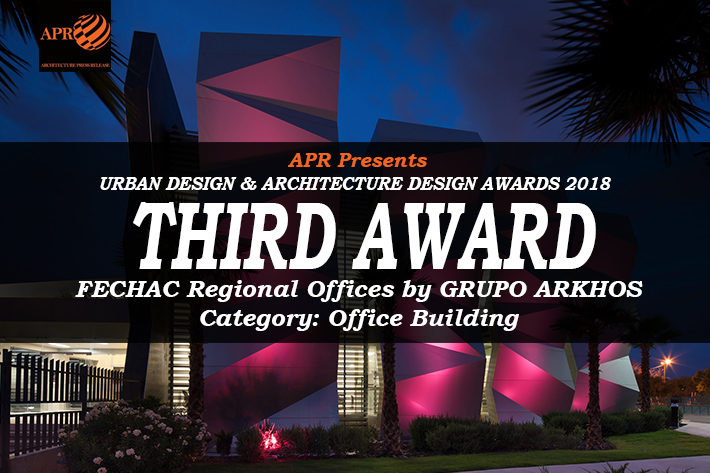In a time of uncertainty and crisis, the counselors of the Chihuahua’s Businessmen Foundation, (FECHAC) for its acronym in Spanish, asked for an “emblematic or iconic” building for their Ciudad Juarez offices. A city trying to revert the negative image it has on the international community, being one of the strongholds of the war against drug trafficking being fought in Mexico.
Urban Design & Architecture Design Awards 2018
Third Award | Category: Office Building
Architects: RUBEN ESCOBAR
Studio Name: GRUPO ARKHOS
Team Members: RUBEN ESCOBAR, RICARDO PACHECO, ROBERTO NAJERA
Country: Mexico
Website: www.grupoarkhos.com
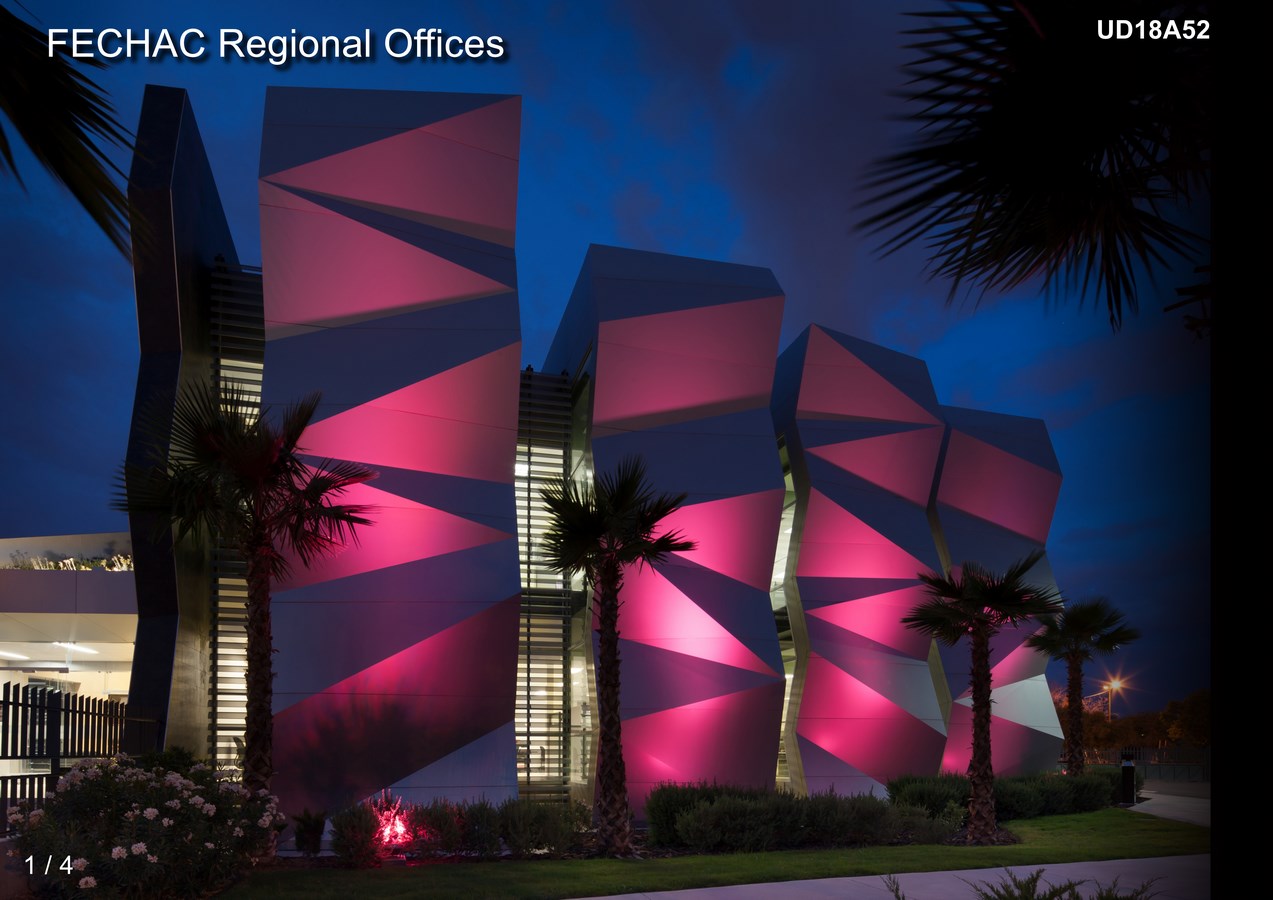
The concept that shaped the building comes from the Community Foundation values, which are: Giving, Subsidiarity, Solidarity, and Common Good. These four values are represented on the four tessellated aluminum panel volumes that make the main elements on the facade, these volumes are as if they have always being there, they are permanent, unmovable, they don’t change, like four giant stone blocks. As the core values of the foundation they are not replaced or removed by time or events. As a similitude with the stone heads on Easter Island, they watch over their people, their community.
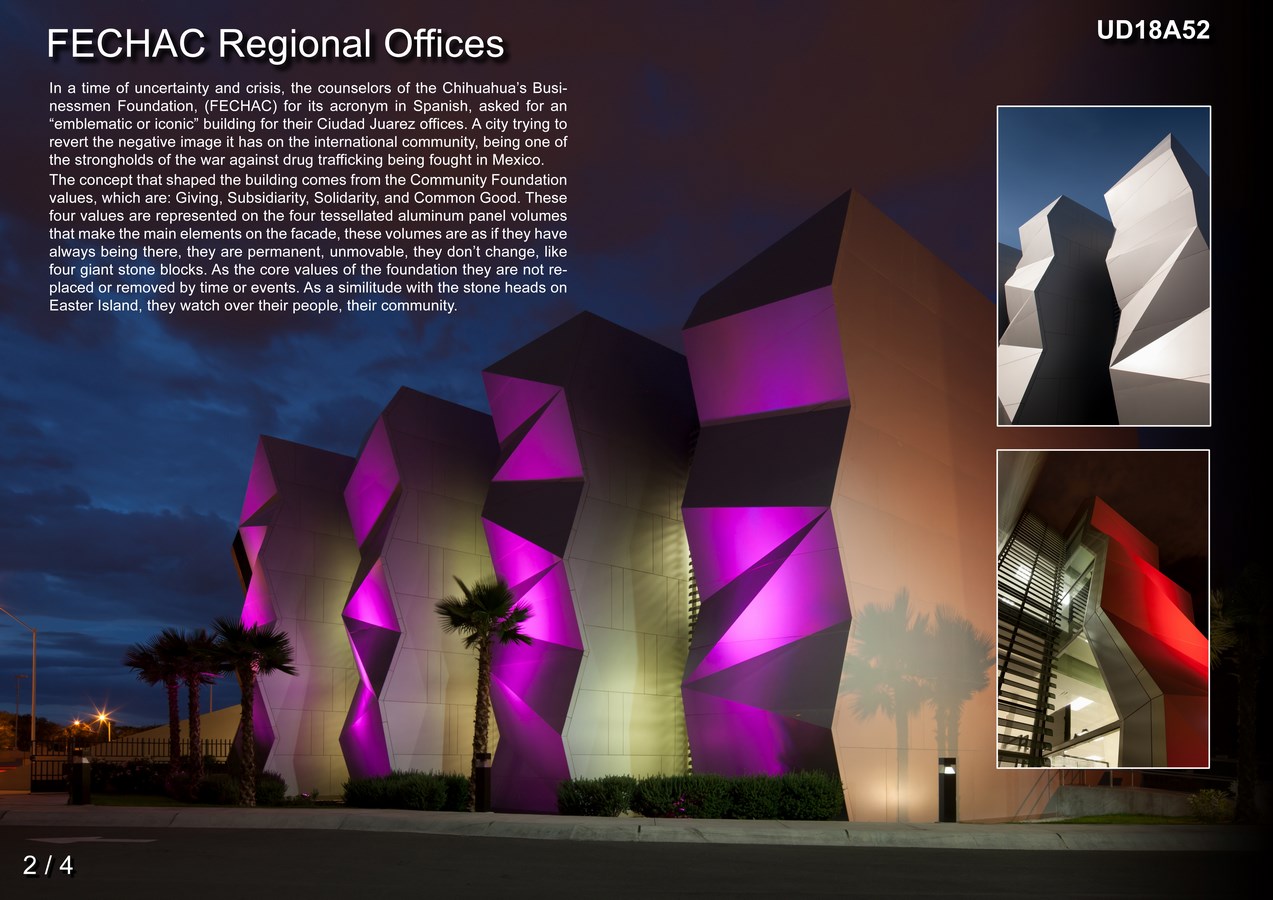
The green roof of the building, it is organic and variable, the color of the leaves and flowers on the plant selection will make a living mural facing the street, and it will be changing according to seasons. Other aspect of the building that will be changing with time is the tessellated façade, first with daylight, hitting the volumes with a different angle, intensity and color of sunlight, the building looks different during the day and especially with the warm dessert light at sunset. After this, the selection of LED color changing lights that illuminate the façade portrays an array of shades and colors during the night.
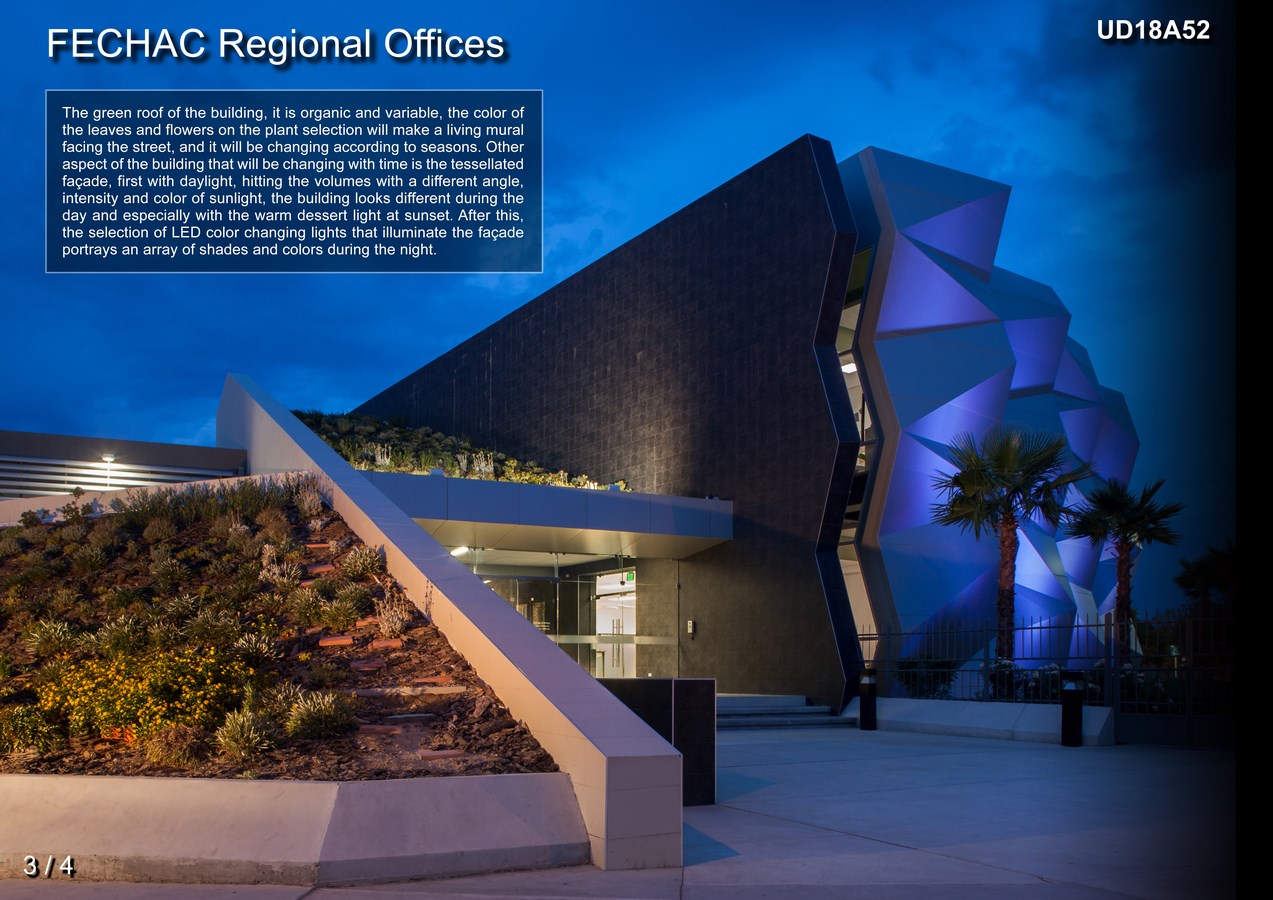
Composite aluminum panels were one of the key elements for the construction of the building, the geometry on the tessellated façade was a main concern among the design team… none of the big installers in the area were willing to work the aluminum sheets in one piece, they wanted to have silicone joints where we wanted just folds, so we had to train ourselves a group of skilled carpenters lead by the general contractor who was willing to break paradigms on how to work and install the panels and also a way to prefabricate the complete facades on the ground, including the structure that supports it, covering it with the aluminum panel sheets, and then lifting the whole module with a crane to its final position. This allowed us to reduce construction times, costs, and reduce the risk of working with a 5 x 18 ft. piece of aluminum with folds on several directions on top of scaffolding structures in order to install them. On top of all this, using the panel sheets almost in one piece left us with very little waste, which we used on the sides of these tessellated elements as a design intent, coming to a maximum 3% waste for the whole job on the aluminum elements.
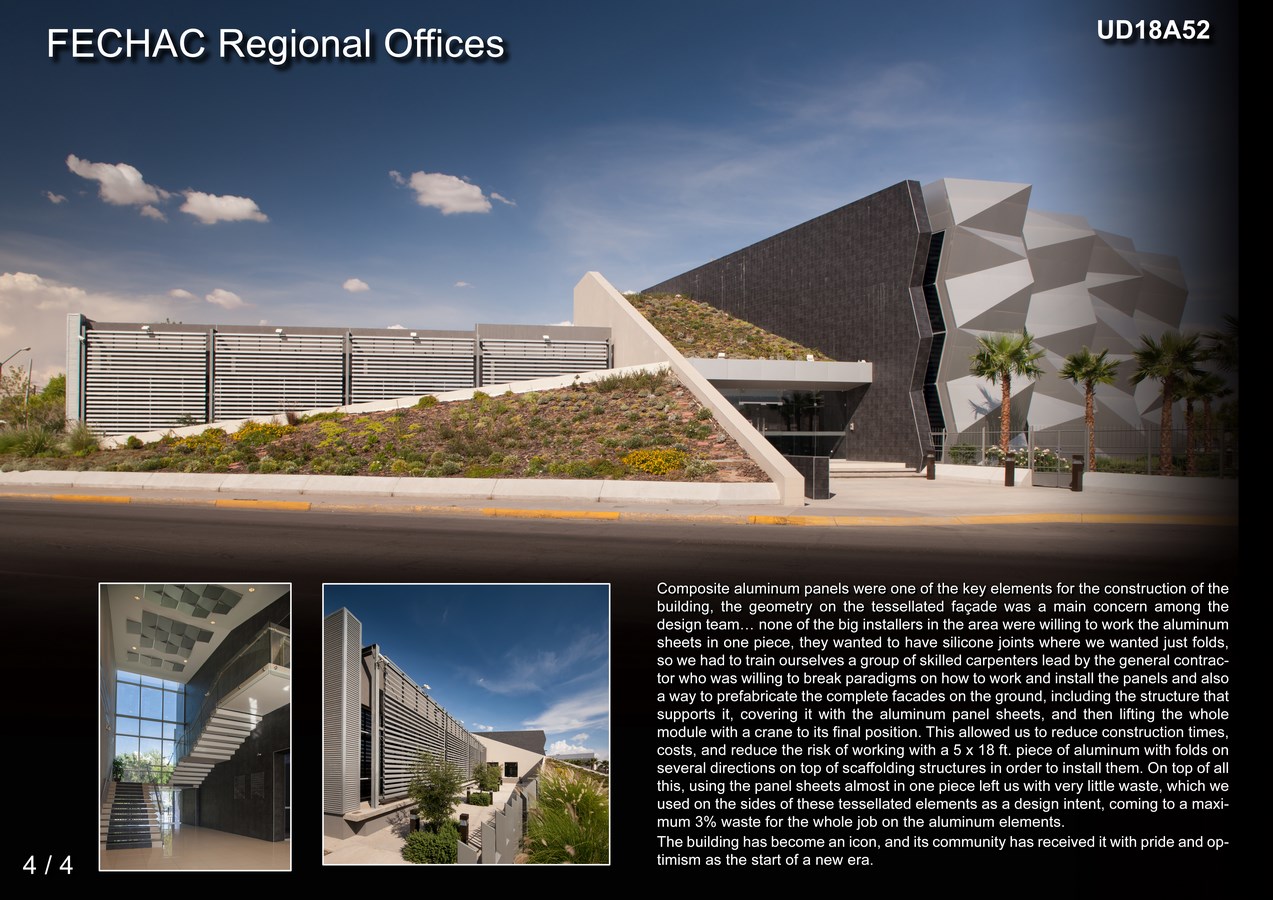
The building has become an icon, and its community has received it with pride and optimism as the start of a new era.


